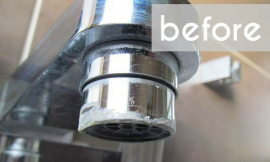
Did you know that nearly 70% of washing machines develop some form of mold or mildew due to moisture buildup? It's a common issue that can lead to unpleasant odors, poor washing performance, and even health risks! Maintaining your washing machine can feel overwhelming, but it’s essential for the longevity of your appliance and the cleanliness of your laundry. In this guide, you'll find the ultimate washing machine maintenance checklist designed to prevent mold. Let's dive into the steps you can take to keep your washer in top shape and your clothes smelling great!
Understanding the Causes of Mold in Washing Machines
Moisture Build-Up
One of the primary contributors to mold growth in washing machines is moisture. After each wash cycle, there's often leftover water that gets trapped in various parts of the washer. This moisture creates the perfect breeding ground for mold, especially in areas that aren't easily visible or accessible.
Detergent Residue
Using too much detergent can also lead to mold issues. Excess detergent doesn't rinse out completely, leaving a residue that can become a nurturing environment for mold and bacteria. It's essential to use the right amount of detergent for each load.
Sealed Areas
Certain parts of your washer are more prone to mold and bacteria, especially those that are sealed. Areas like the door gasket and detergent drawer can trap moisture and create an ideal environment for mold to thrive. Regularly checking and cleaning these spots is crucial.
Routine Maintenance Practices
Regular Cleaning
To prevent mold from forming, it's crucial to establish a cleaning routine. Make it a habit to clean the drum and seals regularly. Use a damp cloth to wipe down the door gasket and run an empty cycle at hot temperatures to kill any lurking mold spores.
Detergent Choice
Choosing the right detergent can also make a significant difference. Opt for high-efficiency (HE) detergents that are designed to produce fewer suds and rinse out more effectively. This can help minimize any leftover residue that can lead to mold.
Cycle Selection
The wash cycles you choose play a role in cleanliness and moisture control. Opt for longer, hotter washes if you're dealing with particularly stubborn stains or odors. These settings can help ensure that everything is thoroughly cleaned and dried.
Deep Cleaning Your Washing Machine
Monthly Maintenance Schedule
Creating a monthly maintenance schedule can help keep your washing machine clean and mold-free. Plan to deep clean your washer at least once a month. This can include wiping down seals, running cleaning cycles, and checking all components for signs of moisture and mold.
Homemade Cleaning Solutions
If you're looking for effective homemade cleaning solutions, vinegar and baking soda can work wonders. Mixing these ingredients and running a cycle can help eliminate mold and leave your washer smelling fresh. Just add two cups of vinegar to the drum and run a hot cycle, followed by a cup of baking soda.
Use of Washing Machine Cleaners
There are also commercial products specifically designed to combat mold and keep your washing machine fresh. Look for washing machine cleaners that are easy to use and suited for your specific model, as they often contain ingredients that eliminate bacteria and odors.
Optimizing Washer Environment
Room Ventilation
Proper ventilation in the laundry room is essential for reducing humidity. Make sure your washing machine area is well-ventilated, as increased airflow helps to keep moisture levels in check and reduces the risk of mold growth.
Temperature Control
Temperature also impacts moisture levels. Ideally, your laundry space should be kept cool and dry. Avoid keeping the room too warm, as warmer temperatures can increase humidity, further promoting mold growth.
Storing Laundry Properly
When it comes to laundry that’s waiting to be washed, proper storage is key. Avoid leaving wet clothes in the washer for extended periods. Instead, hang wet items to dry or move them promptly to the dryer to prevent mold growth.
Signs of Mold Infestation
Visual Indicators
Recognizing physical signs of mold growth in your washing machine is important. Look for any black, green, or white patches in places like the gasket, drum, or detergent drawer. These are clear indicators that mold is present.
Odors to Watch For
Musty smells can also indicate a mold problem. If you notice an unpleasant odor emanating from your washing machine or laundry, it's essential to investigate further. Often, these odors are a result of mold hiding somewhere in the machine.
Performance Issues
Mold can negatively affect your washing performance. If you find that your clothes are coming out dirtier than usual or retaining foul odors even after washing, it could be a sign that mold has taken hold in your machine.
Troubleshooting Mold Issues
Identifying the Source
To effectively address mold issues, begin by identifying the source. It might be helpful to check various components of your washer for moisture build-up and mold. Look closely at areas like the gasket, detergent drawer, and drum.
Expert Assistance
If you've tried cleaning and maintaining your washer but still face persistent mold problems, it may be time to call in a technician. Experts can provide insights and solutions that you might not have considered.
Preventative Measures
Lastly, ongoing preventative measures are essential to ensure that mold doesn't return. Regular cleaning, proper ventilation, and mindful use of detergent can go a long way in keeping your washing machine mold-free.
Conclusion
Regular washing machine maintenance is not just a chore; it's an investment in the lifespan of your appliance and your family's health. By following this ultimate checklist, you can prevent mold, enhance the efficiency of your washer, and keep your laundry fresh. Ready to get started? Make these practices a part of your laundry routine today, and enjoy the satisfaction of a well-maintained washing machine!







